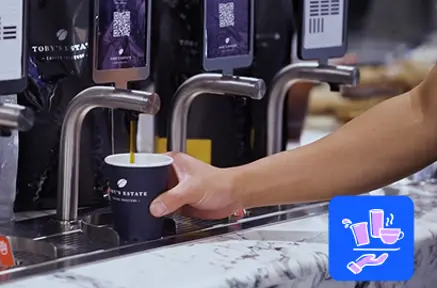What challenges does foodservice have on its table?

The foodservice industry, across the globe, often face common challenges and demands – be it an independent drive-through café in Australia or the main branch of a quick service restaurant (QSR) franchise in Manhattan. These evolving dynamics reflect the priorities and challenges we face as a society. No wonder that, today, top consumer demands and foodservice challenges are interwoven. It is all about getting the mix of convenience, experience, personalization, and affordability right. And the sector seems to be going in the right direction, despite the evolving challenges.

Rising sales
In the U.S. alone, foodservice is forecast to reach $1 trillion in 2024.
Source: 2024-NRA-SOI


So, why is there a paradox? Even with projected upswing, what are the hurdles that the industry needs to deal with?
The economics of it
Inflation has had a substantial impact on revenue growth within the industry, although sales figures are rising again in certain regions. But globally, frequency of eating out, menu mix, and brand loyalty is impacted across foodservice operators, be it a quick-service restaurant or a full-service one. Maintaining profit margins in the face of rising ingredient costs is a core challenge.

“Foodservice operators increasingly battle for limited consumer dollars. To capture this spend, new flavors and recipes are put on the menu. The added complexity – which brings extra costs in food supply – makes it necessary to serve every ounce possible from the kitchen."
Ryan Balock, Director, Global Marketing and Communications, Bag-In-Box and Spouted Pouch
Not losing it with food waste
As per the UNEP Food Waste Index Report 2021, 931 million tons of food was wasted globally, and 26% of that was from foodservice. This suggests that a staggering 17% of total global food production may be wasted in households, retail, and foodservice. Needless to say, the ripple effects of waste are huge both in terms of economics and environmental impact. Minimizing food waste can not only translate to higher profit margins and smarter inventory management but also more efficient operations.
Keeping it together with sustainability
For consumers, sustainability is a key ingredient in decision-making so much so that
61% would more likely order from an outlet that uses environmentally friendly packaging. Foodservice operators are also on board, with 93% believing that being more sustainable is key to being more competitive in the current market. However, 60% also say that consumers demand sustainability but are not willing to pay a premium for it.
Staying ahead with technology
The challenges are complex and interconnected, and there is no one answer. The industry is however increasingly turning to packaging and dispensing technology for both front-of-the-house efficiency and back-of-the-house complexities. Take how shelf-stable packs are helping minimize food waste and eliminate reliance on cold-chain logistics – lowering both costs and environmental impact. Smart dispensing technology is furthering efficiency, reducing food waste, and enabling foodservice operators to upsell with expanded menu options.
More products in flexible packaging
A diversified menu can be a game changer, allowing operators to cater to evolving consumer preferences and tap into consumer trends, such as more plant-based options and healthier beverages. As of 2023, the UK, China and Japan have been leading in new product development, and interestingly, cold beverages, including plant-based milk alternatives, are projected to grow more than hot beverages in the next five years.
Whatever the product being dispensed, flexible packaging plays a key role in meeting many of the industry’s key benchmarks and the challenges discussed above. In the next part of this series, we will explore how packaging can be a differentiator, even when it is operating behind the scenes. Subscribe to our monthly newsletter to get the insights in your inbox or download our report on foodservice now to get an in-depth view.

Expert take: What’s on the menu in foodservice?

Why is packaging crucial in foodservice?

